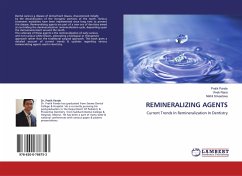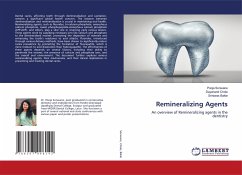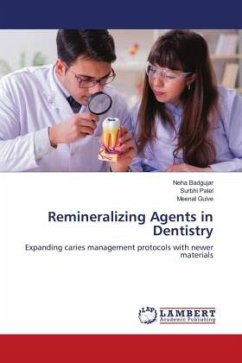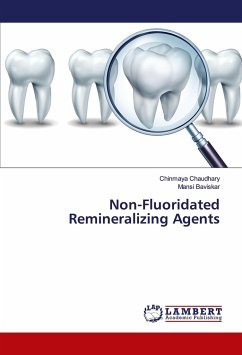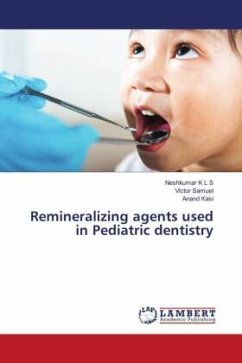
Remineralizing Agents
Versandkostenfrei!
Versandfertig in 6-10 Tagen
36,99 €
inkl. MwSt.

PAYBACK Punkte
18 °P sammeln!
The dental caries is not simply a continuous and unidirectional process of the demineralization of the mineral phase, but a cyclic event with periods of demineralizations and remineralization. The remineralization process is a natural repair mechanism to restore the minerals again, in ionic forms, to the hydroxyapatite (HAP) crystal lattice. It occurs under near-neutral physiological pH conditions whereby calcium and phosphate mineral ions are re-deposited within the caries lesion from saliva and plaque fluid resulting in the formation of newer HAP crystals, which are larger and more resistant...
The dental caries is not simply a continuous and unidirectional process of the demineralization of the mineral phase, but a cyclic event with periods of demineralizations and remineralization. The remineralization process is a natural repair mechanism to restore the minerals again, in ionic forms, to the hydroxyapatite (HAP) crystal lattice. It occurs under near-neutral physiological pH conditions whereby calcium and phosphate mineral ions are re-deposited within the caries lesion from saliva and plaque fluid resulting in the formation of newer HAP crystals, which are larger and more resistant to acid dissolution. Numerous types of remineralizing agents and remineralizing techniques have been researched and many of them are being used clinically, with significantly predictable positive results. The recent researches on remineralization are based on biomimetic remineralization materials, having the capability to create apatite crystals within the completely demineralized collagen fibers.



